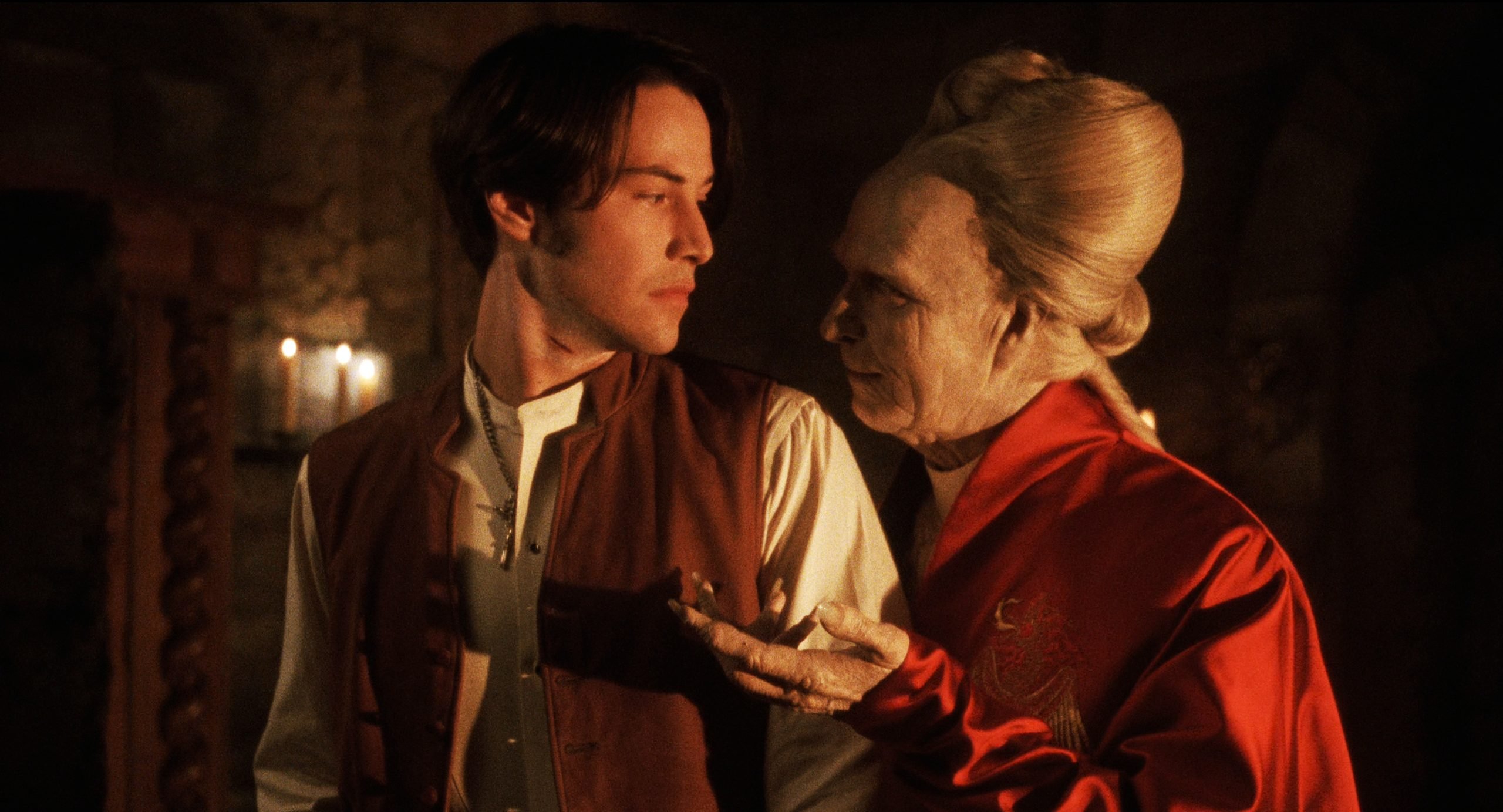
As Seen On explores the paintings and sculptures that have made it to the big and small screens—from a Bond villain’s heisted canvas to the Sopranos’ taste for Renaissance artworks. More than just set decor, these visual works play pivotal roles in on-screen narratives, when not stealing the show.
Dracula is the single most iconic monster of all time. His legend taps into the darkest fears and deepest desires of the human psyche. He is a rich, cursed, blood-sucking, metamorphosing, death-defying bigamist—powerful, alluring, and evil. There have been more than 80 films made about the immortal character since author Bram Stoker’s novel Dracula in 1897. In 1992, Francis Ford Coppola’s adaptation Bram Stoker’s Dracula added to the count’s cinematic legacy.
In one of the movie’s foreshadowing scenes, set at the turn of the 20th century, young British solicitor Jonathan Harker (played by Keanu Reeves) is sitting at a dining table in a Transylvanian castle. The lord of the castle, Count Dracula (Gary Oldman), is his new client. Dracula, looking rather aged and pale due to centuries of sunlessness, is clad in a crimson, silk robe with an opulently long train. He pours his guest a glass of wine and excuses himself for not partaking. “I have already dined, and I never drink… wine,” he explains forebodingly.
Still from Bram Stoker’s Dracula (1992). Photo: Screen grab.
While dining, Harker calls attention to a nearby portrait depicting a saintly, longhaired, bearded man, and notes a family resemblance to his host. Unbeknownst to Harker, the model in the painting is in fact a young Vlad Dracula, pre-vampirization. The artwork is immediately recognizable as a replica of German Renaissance artist Albrecht Dürer’s Self-Portrait at Twenty-Eight.
The original painting, completed in the year 1500 just before his 29th birthday, is regarded as Dürer’s most significant artwork. It strays from the standard techniques of portraiture of the era, the artist opting instead to take cues from sacred depictions of Jesus Christ.
Albrecht Dürer, Self-Portrait in a Fur Skirt (1500). Collection of Alte Pinakothek, Munich. Photo by Fine Art Images/Heritage Images via Getty Images.
In the 15th and 16th centuries, a frontal pose was aberrant for a secular portrait. The obscured background of the painting lends Dürer an aura of omnipresence by seemingly placing him in a vacuum of time and space. His hands are arranged at the middle of his chest as though giving a blessing. In Medieval times, a man crossed the line from youth to maturity at the age of 28. Dürer’s portrait was a deliberate marking of his transformation, and an intentional portrayal of himself as Christ.
The opening scene of Bam Stoker’s Dracula is set in 1462, while Dracula is still human. Upon his victorious return from a religious crusade against the Ottoman Empire, Vlad Dracula discovers his beloved wife, Elisabeta (Winona Ryder), has killed herself due to false reports of his death. A priest proclaims her soul damned, which sends Dracula into a rage. Betrayed by the very church he fought for, he renounces the Christian God, desecrates a chapel, and vows to avenge Elisabeta. He thrusts his sword into the chapel’s stone cross and drinks the blood that spills from it, transforming him into a vampire. Like Dürer’s work, Dracula’s portrait marks a transformation or rite of passage in the count’s life—even if more radically and bloodily.